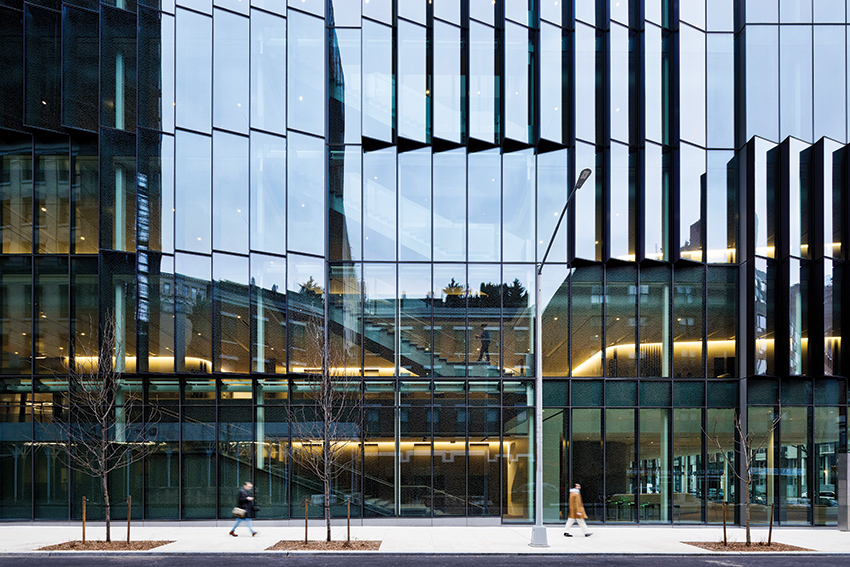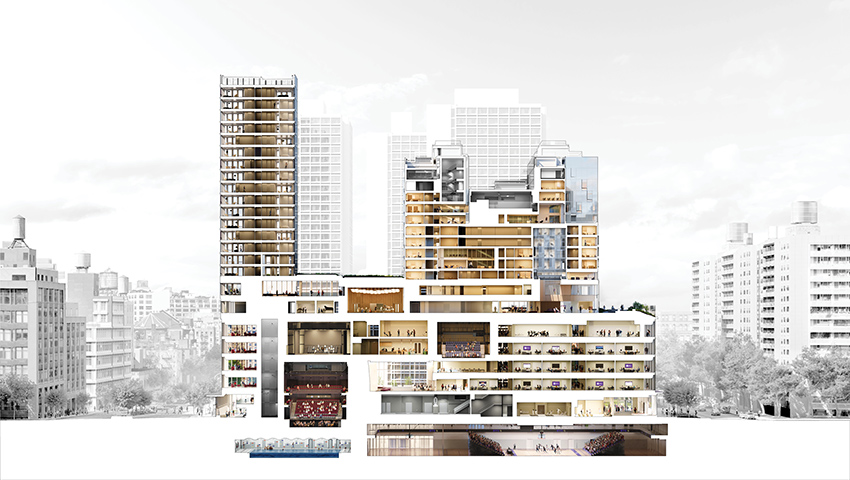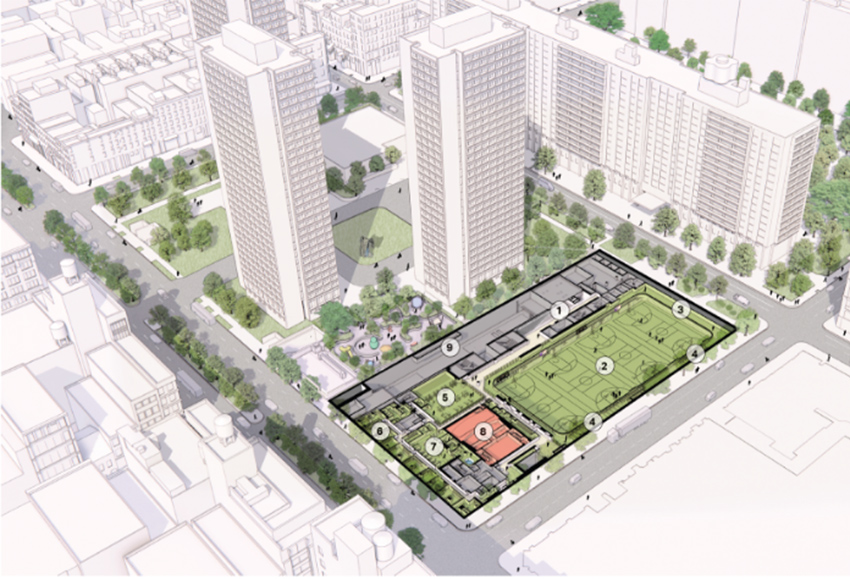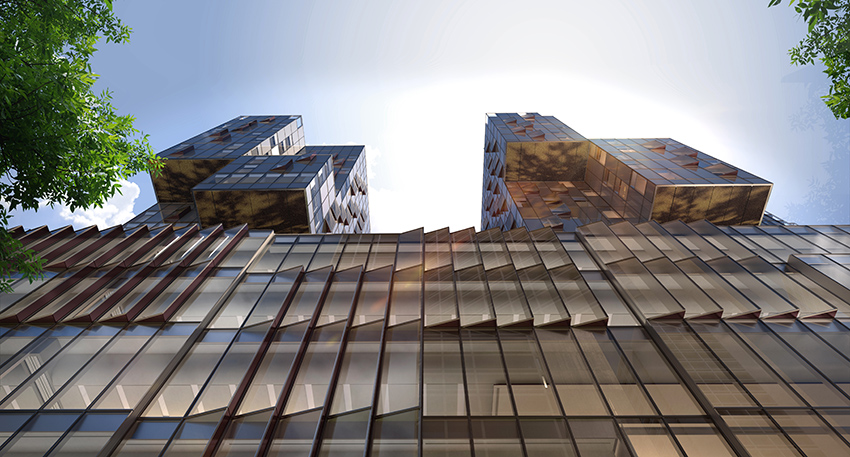Urban Academic Buildings
Learning Objectives:
- Assess the distinct requirements of academic buildings and the conditions of urban environments, noting contrasting campus models for urban universities with different degrees of separation from neighboring nonacademic space.
- Analyze the experiences described in the case studies at major urban universities and apply that knowledge to future projects with comparable settings and missions.
- Identify the properties of structural steel that have addressed the challenges of complex programs, environmental effects, interdisciplinary flexibility, control of vibration and acoustics, and tight construction sites where work proceeds amid ongoing academic and research activity.
- Design academic facilities that accommodate the goals, challenges, and uncertainties of 21st-century higher-education institutions
Credits:
This course is approved as a Structured Course
This course can be self-reported to the AANB, as per their CE Guidelines
Approved for structured learning
Approved for Core Learning
This course can be self-reported to the NLAA
Course may qualify for Learning Hours with NWTAA
Course eligible for OAA Learning Hours
This course is approved as a core course
This course can be self-reported for Learning Units to the Architectural Institute of British Columbia
Urban universities frequently find themselves in paradoxical positions of simultaneous influence and constraint. Their status as purposeful communities within a city's wider social, cultural, and economic context makes them a unique category of client for architects, with complex programs that often superimpose different building functions within close quarters, offering opportunities that call for high degrees of design ingenuity.

Photo courtesy of Connie Zhou / JBSA Images
The Mercer Street academic podium facade of New York University’s John A. Paulson Center.
As major employers, talent magnets, and land stewards in dense cities, universities can be powerful engines of local economic and cultural reinvention; along with the hospital sector (either as university components or as neighbors) and the private spinoff firms that academic research often generates, they drive the “eds and meds” economy that many observers see as essential to the well-being of communities and the nation. The flip side of that condition is the inevitable entanglement in gentrification controversies and town-gown disputes involving socioeconomic class and displacement, which are particularly intense in cities where economies based in traditional manufacturing have retreated over the past half-century or so (see Mallach, particularly Chapters 3-5). And, unlike academic institutions located in smaller towns with pastoral campuses and affordable land available nearby for expansion, an urban university is nearly always spatially hemmed in.
A university's distinctness from its surrounding community is not a given but a variable. The built environments of urban academic institutions fall into a spectrum of patterns, depending on relations with neighbors and internal and civic policy choices regarding the quality of student and faculty life, personnel recruitment, security, expansion, and other considerations. At one end of the continuum are self-contained universities essentially replicating the pastoral-campus model through walled and gated designs that concentrate academic and research activity internally, dedicating part of the host city exclusively to the school. At the other end, a university can be structured as an overlay on a city's street grid, opening its buildings to ground-floor retail and its quads, pathways, performance spaces, lecture halls, and athletic facilities to the nonacademic population.
Few schools occupy positions at the extremes of this spectrum, and the logic of the eds-and-meds economy arguably favors a shift from the enclave model toward greater public permeability. One major urban university, whose full official name underscores this relationship, Columbia University in the City of New York, is in the midst of a major expansion, adding an entirely new campus a short walk from its traditional location, with the explicit goal of enacting such a shift.
When universities seek new facilities to accommodate growth in programs or scale, the physical expression of town-gown relations and policy decisions inevitably becomes the concern of architects and planners. An academic building is often a high-profile project for a firm, with institutional prestige contributing to visibility. Conversely, major universities frequently (perhaps increasingly) seek the cachet associated with memorable building profiles and boldface-name firms. Functionality, however, remains the foremost concern in most academic construction, particularly when urban spatial limitations imply that a multipurpose building will be preferable to several separate facilities answering the different needs of these complex institutions.
Architects planning such buildings frequently need to combine classrooms; libraries; laboratories; residences; faculty and administrative offices; gathering spaces for students, faculty, and sometimes non-university-affiliated visitors; facilities for the performing arts, visual arts, athletics, and other specialized activities; and outdoor space with at least some vegetation, often a component in short supply in urban neighborhoods (see Images 1 and 2). Today's universities also maintain high standards for the environmental performance of their facilities, being centers for research and scholarship related to the climate crisis, including strategies for its mitigation and societal adaptation to it.
The conditions affecting any type of urban construction and building operations —high population density, availability of public transit, neighbors with concerns over a new building's physical encroachment or its effect on local economic variables—can pose particularly tricky balancing acts in an academic building. One may encounter scenarios where a science laboratory containing delicate equipment must cope with vibrations from a subway nearby, or where a heavy building component such as a dormitory tower is to be placed above an athletic facility that must remain column-free to preserve openness, or where a university's need to respond to changing student interest in different academic programs requires building designs flexible enough to accommodate future changes, foreseeable and unforeseeable. Major academic institutions in New York City and Philadelphia have added buildings in recent years that respond to these and other challenges through design innovations and appropriate choices of materials (see Case Studies). All these projects reflect their institutions’ increasing appreciation of how buildings with contemporary sustainable features and technologies, located on dense urban sites accessible by public transit, make efficient use of energy as well as land.
CONCLUSION
A critical difference between urban and non-urban universities—a background factor that can bear on planning and design decisions—is that the former rarely dominate their communities as thoroughly as the latter do. In many smaller cities that host universities, a large land-grant university or a smaller, perhaps prestigious private college is the largest player in town with regard to employment and land-use policies. In a larger city, a university is one institution among many, though some have exercised political and economic power that applies to controversies over eminent domain (Bagli, Fels et al., Kiley). It's possible for an educational institution to win a battle over a particular project or site but lose the longer-range war for public goodwill.
It's also possible for them to reframe their relations with their host cities as something other than conflict. Win-win partnerships between a school and a city over a new construction project can benefit the university, the local population, the municipal public sector, the regional business community, the civic infrastructure, and even the planet, since universities generate research and ideas pertaining to environmental resilience and sustainable practices. New components of an academic built environment appear within these interlocking contexts and can be instruments of progress, community remediation, reputational improvement, and institutional planning. Architects designing such buildings often achieve the best results by operating with a detailed awareness of how complex the settings usually are (physically and otherwise) and how rewarding a carefully-thought-through construction project can be.






















